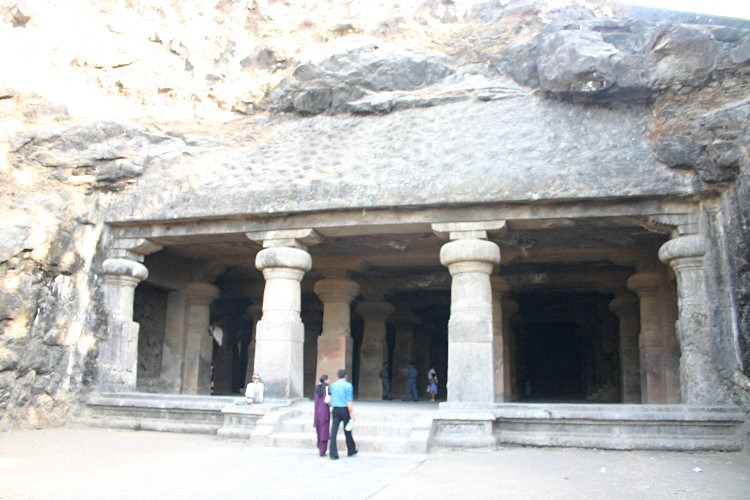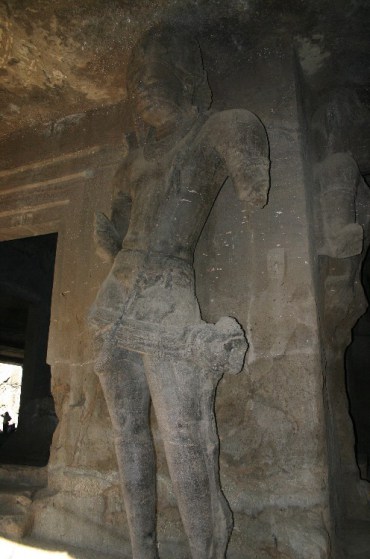Night-Time Arrival: Mumbai
We arrived at Mumbai airport about 9:30 last night.
We were met at the airport by a driver and our contact here in Mumbai, and we drive the very short drive to our hotel. The condition of the streets reminds us of both Bali and Thailand – lanes that disappear in the middle of a block, construction debris on the side of the road, moto-rickshaws (called Tuk Tuks in Thailand). What is dramatically different, obvious even in the pitch black night, is the level of obvious poverty. We didn’t see orphans living in the median in either Thailand or Bali – we see many children asleep on the little concrete strip down the middle of the road, no adult visible. At every red light, very old or very young people come up and paw the passenger window – begging.
Food and Drink at Night
We check into our “4 star” hotel – and it is reminiscent of what hotels in the early 1960s felt like, at least in the dim recesses of my memory. We discover that the restaurant in this hotel is vegetarian, and serves alcohol – we display our tourist credentials by not being aware that there is often a corollary between being vegetarian and serving alcohol, and being “Not Veg” and not serving alcohol. After splashing our faces with water, we hit the restaurant and take advantage of its vegetarian status.
Our driver is at the front door promptly at 9 am to drive us into the city, 35 kilometres and – often – a 2 hour drive time away. Because today is Sunday, and the start of the summer vacation period (the academic year ends April 16, the unofficial start of the hot season – summer – in India), the drive is pleasant and fast. We realize that our hotel was almost on the beach of Juhu, a very trendy suburb, and we have constant sightings of the Arabian Sea throughout the drive downtown. At one point, we round a corner and there is Chowpatty Beach, with downtown Mumbai across the water.
Breaking Hearts
Our new “business class” hotel is again a variation on a 60’s theme, with every modern convenience — for 1962. We check-in, and head out for a walk before lunch and our afternoon tour. It feels like an older, dirtier version of Bangkok. A child follows us begging. Then an adult does the same. We say to ourselves that we are glad that we have spent 5 weeks in SE Asia before coming to India: We are not shocked, despite seeing destitution far beyond what we have seen so far. We don’t know what to do, though: our hearts are breaking, but both our guide and our guidebook have told us, in the strongest of terms, that the begging is saved for tourists, and that if we succumb we are likely to be swarmed and robbed.
The Gateway to India
At 1:30, our driver and tour guide are outside the hotel, and off we go – straight to the Gateway to India. I have seen photos of this arch, and always thought it a wonderful conceit – to have a formal “entrance” to a country. The arch was built in 1924 to commemorate the visit of King George V and Queen Mary to Bombay in 1911. We walk through the Gateway, which is a stunning structure, and onto the boat that will take us to the Elephanta Caves on Elephanta Island, an hour across the bay (downtown Mumbai is built at the southern tip of a series of islands that have become a peninsula through landfill). Shortly after we take off, a piece of the guardrail from the upper deck comes crashing down and bounces into the bay. Greg looks around and asks, only half-facetiously, where the life jackets are.
There were not many women on the street when we walked earlier today or in the public areas of our hotels, so this is our first real exposure to women since we arrived in India. Almost all are dressed in traditional garb, in bright beautiful colours and patterns. The men, by contrast, are almost all dressed in western clothes – shirt with collar, and, despite the heat, long pants. This is a first – everywhere we have been in Asia, the men have worn shorts except when required for work. We understand that wearing shorts in India is a sign of being low-caste.
Picking Up Additional Passengers
Halfway to Elephanta, the ferry stops beside a sister ferry, and all of the passengers from the other ferry jump onto ours – mechanical problems have meant that the other ferry was drifting around the bay for a few minutes – these ferries are on a “leave when full” schedule, and today is busy, so they are leaving every few minutes. Transfers complete, we take off again. We see a number of oil refineries around the bay, a huge container port on the mainland, and a CANDU nuclear reactor, 1 of 5 Canada sold to India in the 1970s. Looking back to Mumbai, you can see mile after mile of highrise buildings. Avinash, our guide, explains that because the peninsula is so narrow, it has a very high density. He also tells us a bit about life in Mumbai, and the suburbs, which stretch forever up on the mainland.
There are about 18 million people living in Mumbai (about double the number in Bangkok), and the suburban trains carry over 6 million of them every workday. Our guidebook says that the local economy of Mumbai, where slightly less than 2% of India’s people live, generates 37% of India’s GDP. We wonder, given the poverty we have seen poverty here, what will it be like when we get outside the comparative prosperity of Mumbai?
The Green Island of Elephanta
We finally arrive at Elephanta. This beautiful, green island is the site of a number of caves excavated about 1,300 years ago. Within the caves are temples to the god Shiva. At the entrance and throughout the huge caves are columns that look structural, but that are really just decorative. Throughout the temple are carved reliefs depicting a variety of Shiva’s exploits. Despite the damage the caves and reliefs inside have suffered over the years, they are still amazing, in part because everything here was carved in 1 piece from the rock itself.
There is a restaurant just down the street from our hotel that Avinash told us was very good, so we head there for dinner. Avinash was right – our meal is delicious! It includes chicken, and thus no alcohol.






Comments